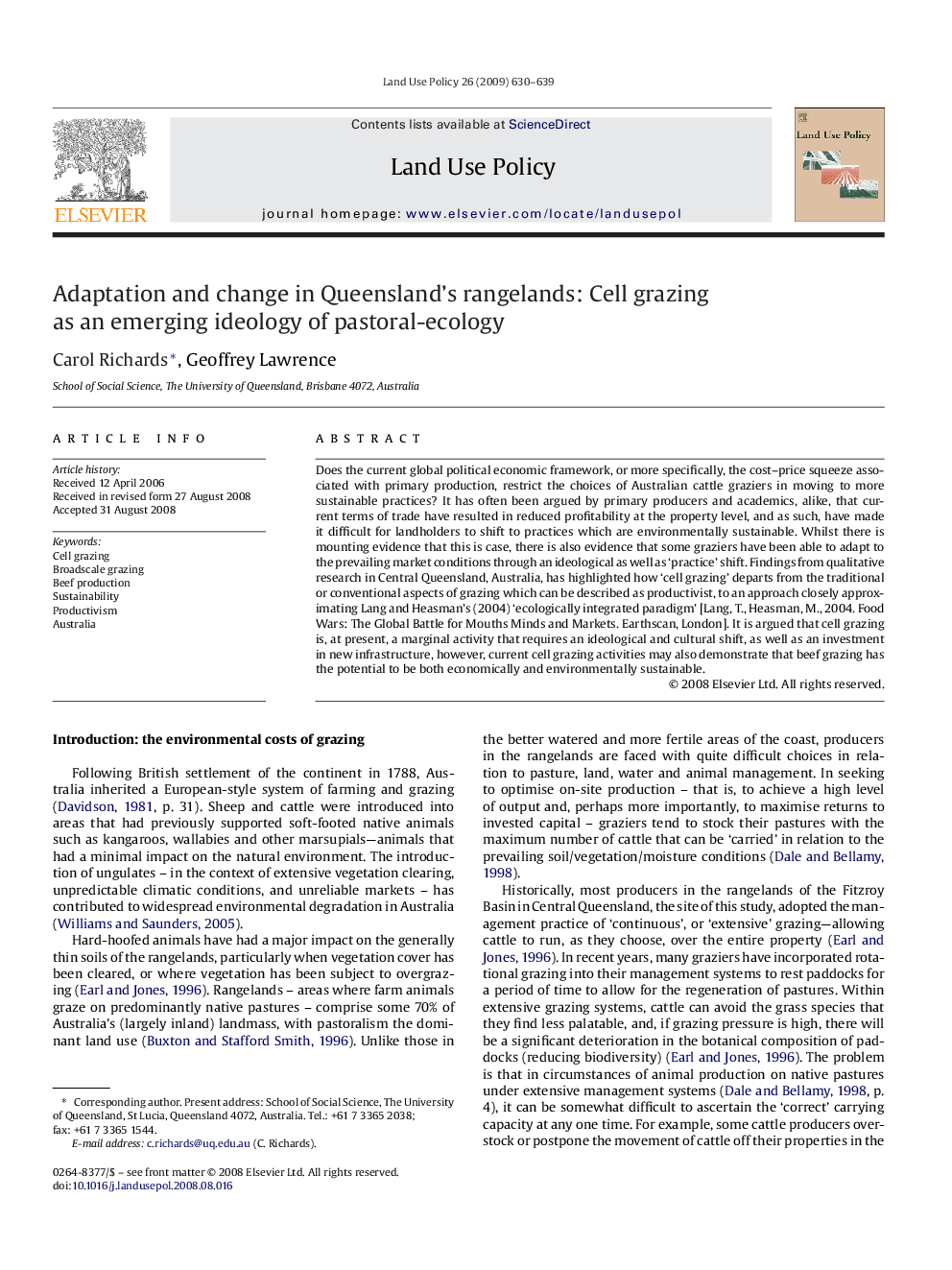| کد مقاله | کد نشریه | سال انتشار | مقاله انگلیسی | نسخه تمام متن |
|---|---|---|---|---|
| 93729 | 160139 | 2009 | 10 صفحه PDF | دانلود رایگان |

Does the current global political economic framework, or more specifically, the cost–price squeeze associated with primary production, restrict the choices of Australian cattle graziers in moving to more sustainable practices? It has often been argued by primary producers and academics, alike, that current terms of trade have resulted in reduced profitability at the property level, and as such, have made it difficult for landholders to shift to practices which are environmentally sustainable. Whilst there is mounting evidence that this is case, there is also evidence that some graziers have been able to adapt to the prevailing market conditions through an ideological as well as ‘practice’ shift. Findings from qualitative research in Central Queensland, Australia, has highlighted how ‘cell grazing’ departs from the traditional or conventional aspects of grazing which can be described as productivist, to an approach closely approximating Lang and Heasman’s (2004) ‘ecologically integrated paradigm’ [Lang, T., Heasman, M., 2004. Food Wars: The Global Battle for Mouths Minds and Markets. Earthscan, London]. It is argued that cell grazing is, at present, a marginal activity that requires an ideological and cultural shift, as well as an investment in new infrastructure, however, current cell grazing activities may also demonstrate that beef grazing has the potential to be both economically and environmentally sustainable.
Journal: Land Use Policy - Volume 26, Issue 3, July 2009, Pages 630–639